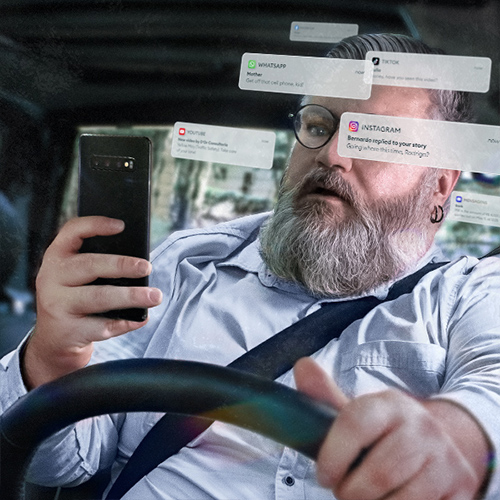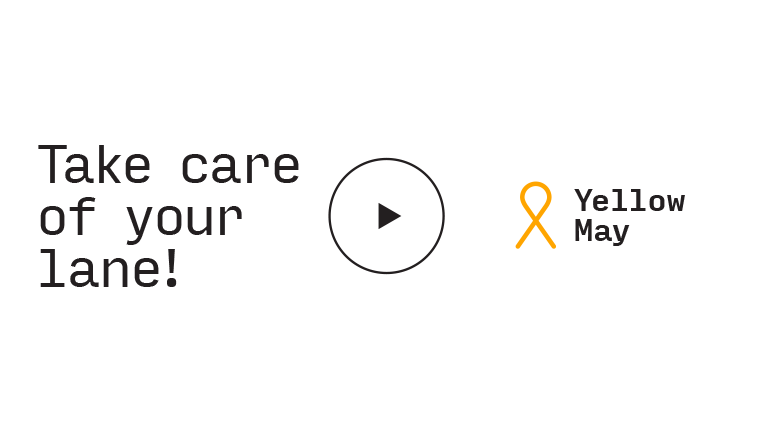Deviate from
Your social networks are very effective in causing you that almost uncontrollable craving for connection and belonging. Add to this the countless notifications that your cell phone is bombarded with throughout the day and, voilà, resisting the tempting need to know everything and everyone always becomes even more difficult. And that’s when the worst accident of your life happens…
You look at your cell phone while driving!
This is the number of fatal victims that Brazilian traffic causes every day. Per hour, there are at least 3 (3.70) deaths, which usually follow a clear pattern: they are mostly motorcyclists, young people, and male individuals.
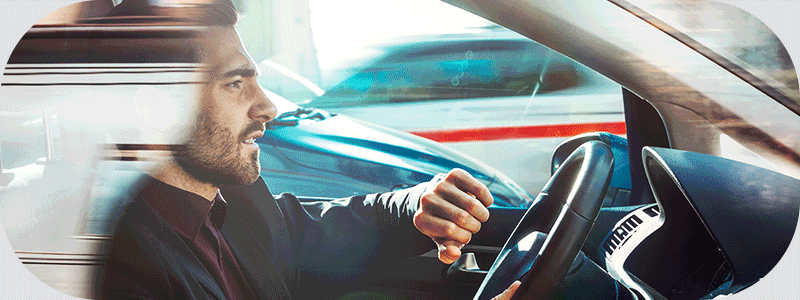
Brazil is the 4th country in the world regarding traffic accidents, and these are the main causes:
Excessive speeding
Drinking and driving
Cell phone while driving
Not wearing a helmet
Improper maintenance
Not signaling right or left
Disregarding traffic lights
Pedestrian recklessness
Falling asleep
Wrongful overtaking
And it’s not only lives that are lost, but a lot of money as well: the Brazilian government spends, every year, almost R$ 60 billion (US$ 28 billion) on everything that this major public health problem involves. These are amounts of money and lives that could be spared. After all, according to the United Nations Organization (UNO), over 90% of all traffic accidents happen because of carelessness, imprudence, and negligence.
And since we have mentioned recklessness and negligence…

In almost half of the situations in which there is lack of attention while driving, the cell phone is to blame. After all, besides distracting the driver’s attention, the device also uses the hand that should be on the steering wheel.
According to the Brazilian Association of Traffic Medicine (Abramet), cell phones are already the main form of distraction in traffic and, not by chance, the third largest responsible for fatal accidents. Which doesn’t seem to intimidate many people: in Brazil, almost 30 drivers are caught per hour driving while using a cell phone.
Science Explains It
More recent studies on driving behavior have already established: traffic can overload the brain! When you drive at 45 km/h, a relatively good speed, your brain needs to process about 1300 visual pieces of information – obstacles, cars, signs, traffic lights, pedestrians, turns, etc. – per minute. If each of these pieces of information were a single letter, the mental effort would be equivalent to having to read this entire paragraph in just one minute. All of this while driving a vehicle.
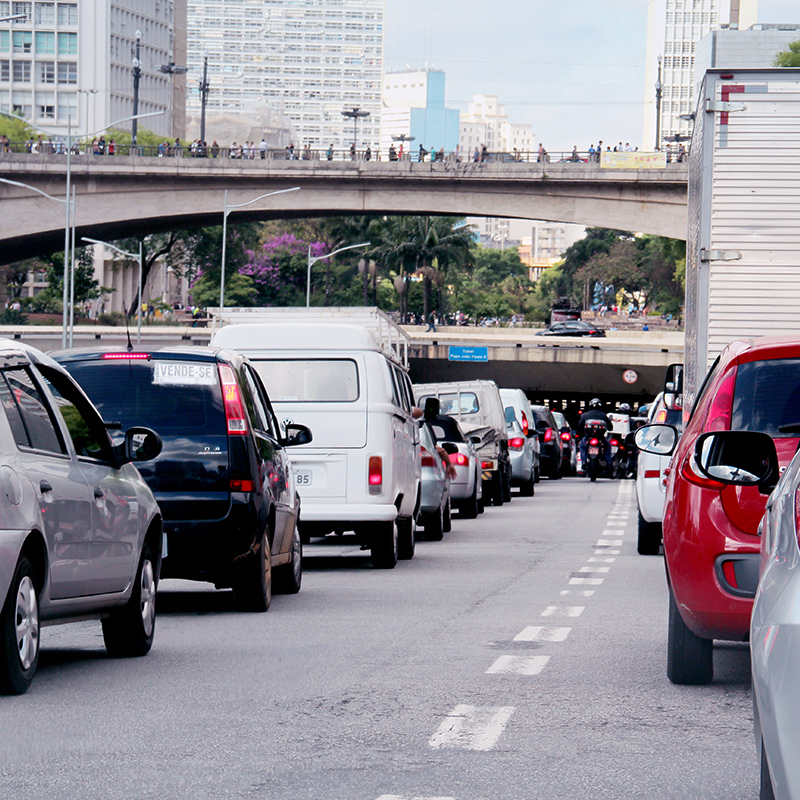
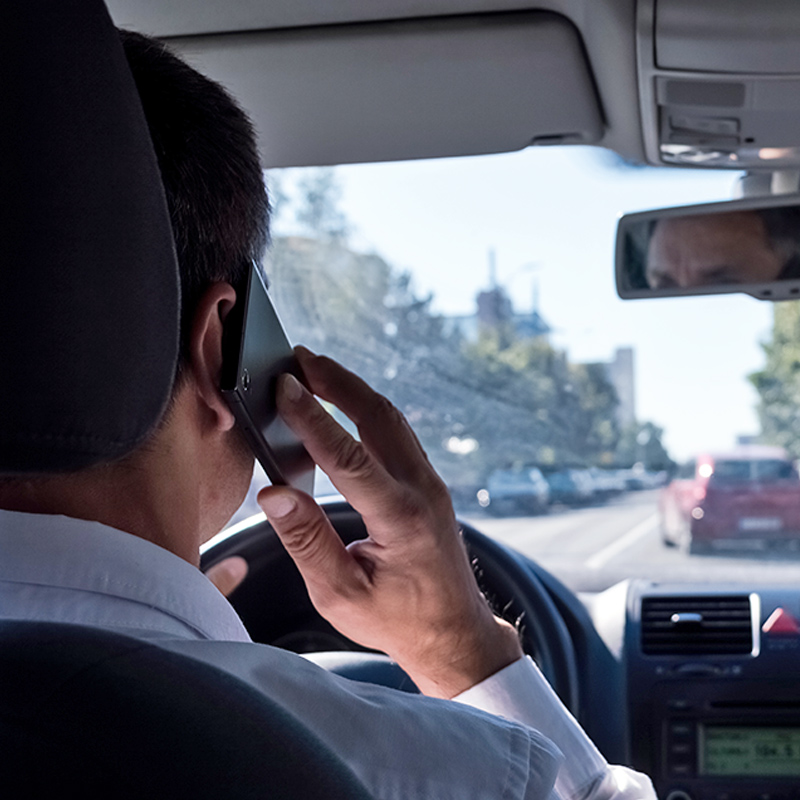
Now add to this information-packed equation the distractions of your cell phone, which, unlike the others, are not in front of or around the vehicle, but on the screen of the device. This causes you to drive without proper attention. An action that, even focusing 100%, is already highly risky…
And this risk reverberates: according to experts, even after the end of a call or the reply to a message, that kind of conversation or interaction maintains a brain activity that causes the driver to be inattentive. In terms of time, the driver still keeps about three seconds without paying full attention to the traffic.
Alcohol and Cell Phone while driving: what do they have in common?
Medical studies have already concluded that driving while using a cell phone causes similar reactions in the driver as driving under the influence of alcohol, i.e., blurriness, inattentiveness, delayed reflexes…
And there is something about cell phones that is even worse: in general, drivers are more aware of and “respectful” of the risks that alcohol poses to those who are driving. Something that, in the case of the cell phone, is still underestimated and neglected.
But what about science, which of the two is the most dangerous? According to a study by the English institution RAC Foundation, sending messages while driving delays the driver’s reaction time by 35%, while the delay caused by alcohol is 12%. In other words: it is scientifically proven that, on average, driving on a cell phone is riskier than drunk driving.
CTB (Brazilian Traffic Code) tagged you in a post
Now let’s get down to practical information? See what the Brazilian Traffic Code (CTB) says about using a cell phone while driving:
It is forbidden to drive the vehicle:
Article 252 (Chapter XV – Infringements)
VI – Using earphones connected to a sound system or cell phone
Infringement – Average (4 points in the Brazilian Driver’s License)
Penalty – Fine (R$ 130,16)
Sole Paragraph: the hypothesis foreseen in Item V will be characterized as a very serious infringement when the driver is holding or handling a cell phone
Infringement – Severe (7 points on the Brazilian Driver’s License)
Penalty – Fine (R$ 293,47)
Talking on the speakerphone in cases of extreme necessity is not an infringement, but it is still not recommended because it is harmful to traffic safety. The exception where the law allows the use of a cell phone is precisely when it is in GPS mode.
Driving
Code
-

Defensive
DrivingAlways be prepared and aware of possible risks to avoid accidents. This way you will have more time and responsiveness in case it is needed.
-

The turn signal is not an optional item
There needs to be efficient communication between drivers, and the correct use of the turn signals is essential so that their intentions are no surprise to others.
-

Traffic is not
a raceObserve the speed limits. They are intended to give you greater agility and safety in case you need to react to obstacles on the road.
-

Use seat belts and safety equipment
Wearing seat belts in the front seat reduces the chances of serious injury by 45 percent, and those in the back seat make passengers up to 75 percent safer.
-

Observe the
traffic signalsThey exist to improve the fluidity of the roads and increase the safety of those who travel along them. Observing them is indispensable for good coexistence in traffic.
-

Have your vehicle checked regularly
Possible wear and tear is checked and major problems are prevented. Taking care of tires, oil, brakes, and headlights helps to ensure safety in traffic, avoiding accidents due to mechanical failure.
Download the campaign’s poster and wallpapers and help make traffic safer by spreading the word to your acquaintances.
Deviate from text messages. Avoid distractions.
#CuidaDaSuaVia
